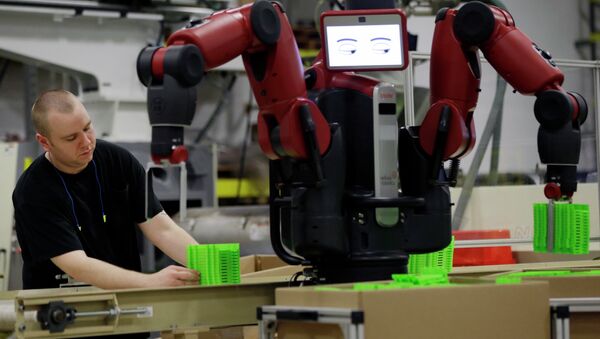Slave labor might have been a desired commodity centuries ago, but even slaves required taking care of, such as housing, food, and, of course, guards to make sure they don’t revolt or escape. Ethical issues aside, this was an economically viable labor force for a while. As the global civilization developed, slavery was finally branded as unacceptable. New kinds of labor relations arose, born from new society, new moral codes, new technology.
The industrial revolution changed the way we viewed labor – factories, assembly lines, mass production streamlined labor. Workers, who received their compensation for their labor, acted as units of a greater whole, each assigned to a specific task, performing it over and over and over again. They were still overworked, conditions were poor, but the process was going in a particular direction – division of labor, breaking up the process of creating something into smaller parts, which can be accomplished quickly and easily.
So easily, in fact, that machines could do it. Factory automation truly began in 1956, when George Devol and Joseph Engelberger founded Unimation, the first company to produce a robot. The robots were called programmable transfer machines and their main use was to transfer objects from one point to another. Since then, factory robots had become widespread, with tasks ranging from simply moving objects to performing complex tasks with surgical accuracy and lightning speed – creating goods from cars to high-tech electronics to anything which can be modeled in 3D in a computer program. The trend of replacing human labor with robotic will likely persist for the foreseeable future. Martin Ford, author of "Rise of the Robots: Technology and the Threat of a Jobless Future", stipulates:
We are, in all likelihood, at the leading edge of an explosive wave of innovation that will ultimately produce robots geared toward nearly every conceivable commercial, industrial, and consumer task. That explosion will be powered by the availability of standardized software and hardware building blocks that will make it a relatively simple matter to assemble new designs without the need to reinvent the wheel. Just as the Kinect made machine vision affordable, other hardware components—such as robotic arms—will see their costs driven down as robots begin scaling up to high-volume production.
So, are we in danger of creating a society of the unemployed? Not necessarily. Martin Ford notes:
There is a widely held belief—based on historical evidence stretching back at least as far as the industrial revolution—that while technology may certainly destroy jobs, businesses, and even entire industries, it will also create entirely new occupations… A classic example is the rise of the automotive industry in the early twentieth century, and the corresponding demise of businesses engaged in manufacturing horse-drawn carriages.
While some scholars, including Ford, agree that advances in robotics will make a large portion of the human workforce obsolete, re-education will allow humans to focus their efforts in more creative ways – statistics suggest that increase in use of factory robots is inversely correlated with unemployment – also causality is dubious here and it’s likely these are two factors of a society developing in a labor-efficient manner. The real question is – will robots be able to replace creative jobs the same way they replaced manual labor jobs?

